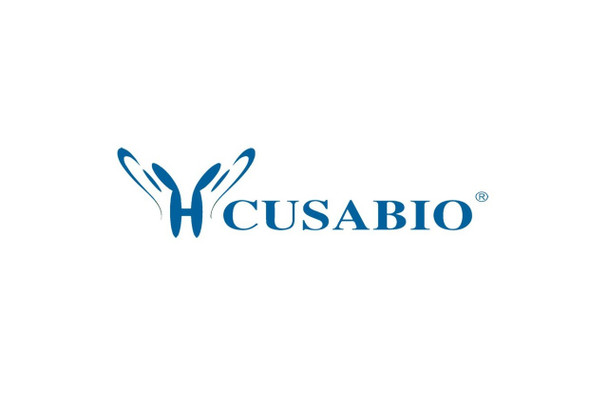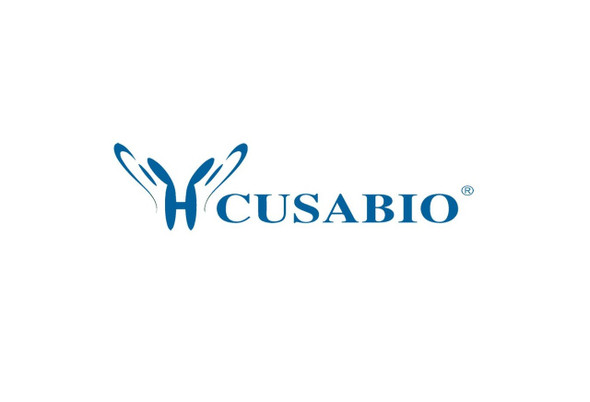Cusabio Human Recombinants
Recombinant Human ATP-sensitive inward rectifier potassium channel 10 (KCNJ10) | CSB-CF012048HU
- SKU:
- CSB-CF012048HU
- Availability:
- 18 - 23 Working Days
Description
Recombinant Human ATP-sensitive inward rectifier potassium channel 10 (KCNJ10) | CSB-CF012048HU | Cusabio
Alternative Name(s): ATP-dependent inwardly rectifying potassium channel Kir4.1 Inward rectifier K(+) channel Kir1.2 Potassium channel, inwardly rectifying subfamily J member 10
Gene Names: KCNJ10
Research Areas: Neuroscience
Organism: Homo sapiens (Human)
AA Sequence: MTSVAKVYYSQTTQTESRPLMGPGIRRRRVLTKDGRSNVRMEHIADKRFLYLKDLWTTFIDMQWRYKLLLFSATFAGTWFLFGVVWYLVAVAHGDLLELDPPANHTPCVVQVHTLTGAFLFSLESQTTIGYGFRYISEECPLAIVLLIAQLVLTTILEIFITGTFLAKIARPKKRAETIRFSQHAVVASHNGKPCLMIRVANMRKSLLIGCQVTGKLLQTHQTKEGENIRLNQVNVTFQVDTASDSPFLILPLTFYHVVDETSPLKDLPLRSGEGDFELVLILSGTVESTSATCQVRTSYLPEEILWGYEFTPAISLSASGKYIADFSLFDQVVKVASPSGLRDSTVRYGDPEKLKLEESLREQAEKEGSALSVRISNV
Source: in vitro E.coli expression system
Tag Info: N-terminal 6xHis-SUMO-tagged
Expression Region: 1-379aa
Sequence Info: Full Length
MW: 58.5 kDa
Purity: Greater than 90% as determined by SDS-PAGE.
Relevance: May be responsible for potassium buffering action of glial cells in the brain. Inward rectifier potassium channels are characterized by a greater tendency to allow potassium to flow into the cell rather than out of it. Their voltage dependence is regulated by the concentration of extracellular potassium; as external potassium is raised, the voltage range of the channel opening shifts to more positive voltages. The inward rectification is mainly due to the blockage of outward current by internal magnesium. Can be blocked by extracellular barium and cesium (By similarity). In the kidney, together with KCNJ16, mediates basolateral K+ recycling in distal tubules; this process is critical for Na+ reabsorption at the tubules
Reference: "Co-expression of human Kir3 subunits can yield channels with different functional properties."Schoots O., Wilson J.M., Ethier N., Bigras E., Hebert T.E., Van Tol H.H.M.Cell. Signal. 11:871-883(1999)
Storage: The shelf life is related to many factors, storage state, buffer ingredients, storage temperature and the stability of the protein itself. Generally, the shelf life of liquid form is 6 months at -20?/-80?. The shelf life of lyophilized form is 12 months at -20?/-80?.
Notes: Repeated freezing and thawing is not recommended. Store working aliquots at 4? for up to one week.
Function: May be responsible for potassium buffering action of glial cells in the brain. Inward rectifier potassium channels are characterized by a greater tendency to allow potassium to flow into the cell rather than out of it. Their voltage dependence is regulated by the concentration of extracellular potassium; as external potassium is raised, the voltage range of the channel opening shifts to more positive voltages. The inward rectification is mainly due to the blockage of outward current by internal magnesium. Can be blocked by extracellular barium and cesium (By similarity). In the kidney, together with KCNJ16, mediates basolateral K(+) recycling in distal tubules; this process is critical for Na(+) reabsorption at the tubules.
Involvement in disease: Seizures, sensorineural deafness, ataxia, mental retardation, and electrolyte imbalance (SESAMES)
Subcellular Location: Membrane, Multi-pass membrane protein, Basolateral cell membrane
Protein Families: Inward rectifier-type potassium channel (TC 1.A.2.1) family, KCNJ10 subfamily
Tissue Specificity: Expressed in kidney (at protein level).
Paythway:
Form: Liquid or Lyophilized powder
Buffer: If the delivery form is liquid, the default storage buffer is Tris/PBS-based buffer, 5%-50% glycerol. If the delivery form is lyophilized powder, the buffer before lyophilization is Tris/PBS-based buffer, 6% Trehalose, pH 8.0.
Reconstitution: We recommend that this vial be briefly centrifuged prior to opening to bring the contents to the bottom. Please reconstitute protein in deionized sterile water to a concentration of 0.1-1.0 mg/mL.We recommend to add 5-50% of glycerol (final concentration) and aliquot for long-term storage at -20?/-80?. Our default final concentration of glycerol is 50%. Customers could use it as reference.
Uniprot ID: P78508
HGNC Database Link: HGNC
UniGene Database Link: UniGene
KEGG Database Link: KEGG
STRING Database Link: STRING
OMIM Database Link: OMIM









